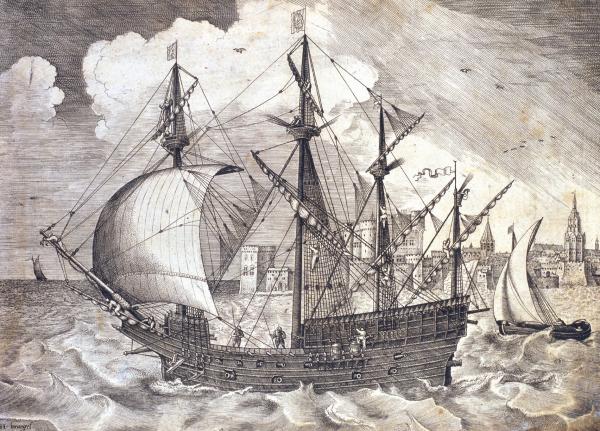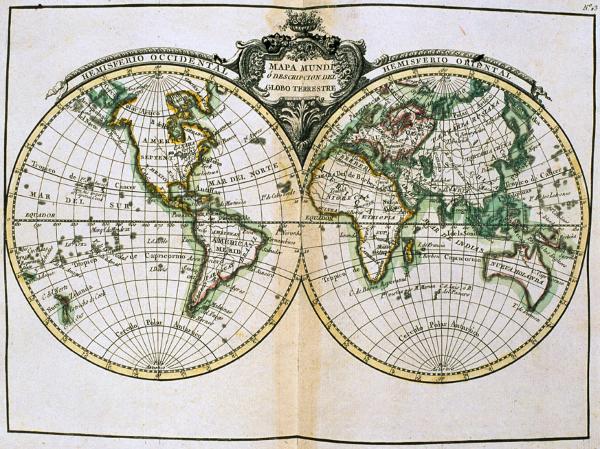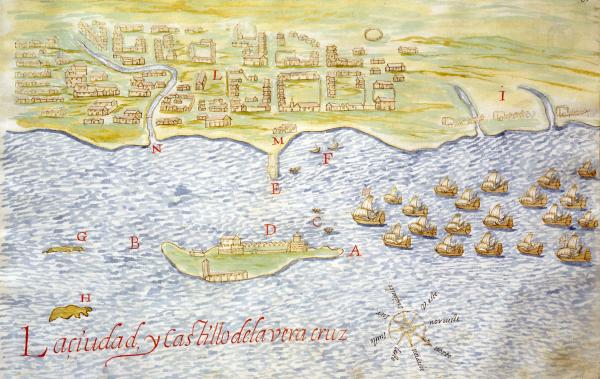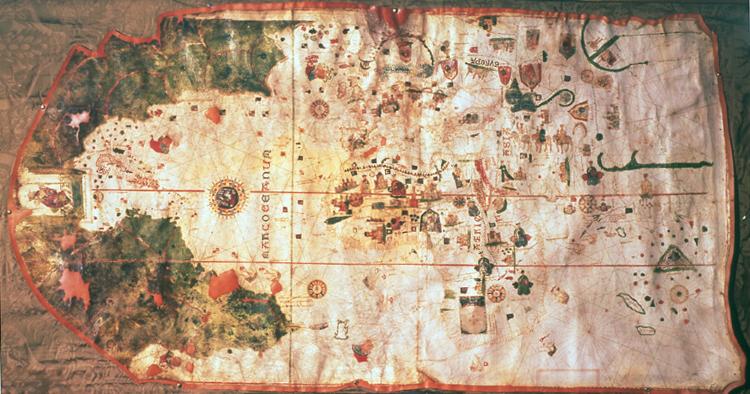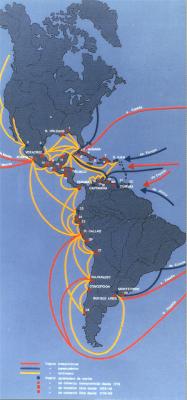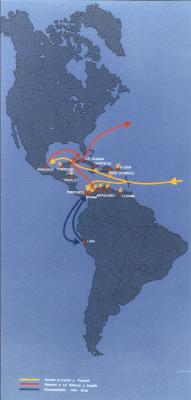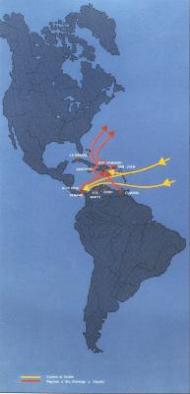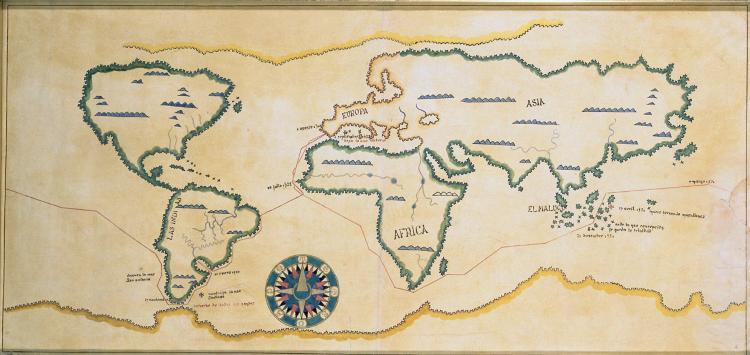| Maps of the ports and routes used for free trading
during the 18th century, according to Céspedes del Castillo
1.Pensacola, 2. San Blas, 3. Santisteban del Puerto, 4. Remedios, 5.
Santiago de Cuba, 6. Batabano, 7. Montecristi, 8. Santo Domingo, 9.
Coatzacoalcos, 10. Tehuantepec, 11. Campeche, 12. Santo Tomás, 13. Puerto
Caballos, 14. Acajutla, 15. Realejo, 16. Santa Marta, 17. Rio Hacha, 18.
Maracaibo, 19. Puerto Cabello, 20. La Guaira, 21. Isla Margarita, 22.
Puerto España (Trinidad), 23. Guayaquil, 24. Piura, 25. Pacasmayo, 26.
Pisco, 27. Arica, 28. Chilo, 29. Maldonado. |
Map of the sea routes used during the 17th century,
according to Pierre Chaunu |
Map of the sea routes used after the middle of the 16h
century, according to Céspedes del Castillo |
Map of the principal sea routes used during the first
third of the 16th century, according to Céspedes del
Castillo |
